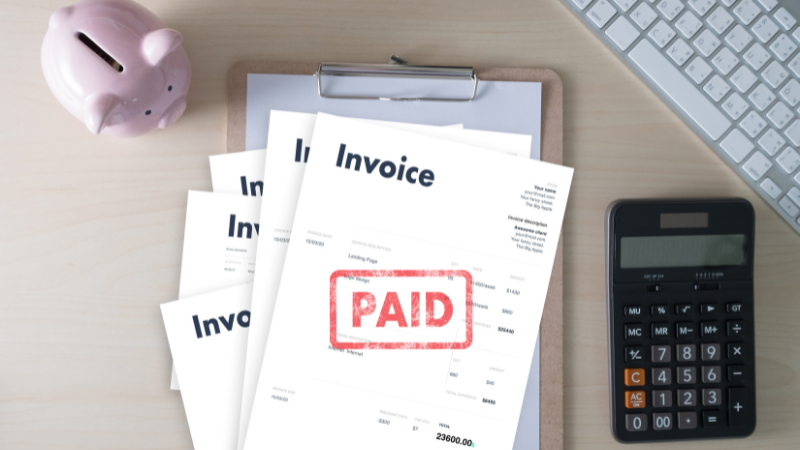Avoiding Employee Burnout in Your Workplace
Engaged, enthusiastic and motivated employees are your business’ most valuable asset. They boost productivity, performance and business growth.
But, what happens when your highly engaged employees care so deeply that they run themselves into the ground and suffer burnout?
What is Burnout?
The World Health Organization defines burnout as "a syndrome conceptualized as resulting from chronic workplace stress that has not been successfully managed."
Metaphorically, it can be likened to a drained battery that can no longer hold it’ charge.
Burnout is a state of physical and mental exhaustion that leads to cynicism, inefficiency and reduction in quality. It can be quite insidious as it often starts slow and builds up. If nothing is done about potential burnout it can lead to feelings of helplessness, failure and detachment.
What Causes Burnout?
At its most basic, burnout is caused by stress. Being overworked, undervalued and under pressure with lack of support will cause an employee to burnout. In the modern workplace, the lines between work and home have been blurred by technology, leaving many employees feeling like they always need to be ‘on’.
This pressure to be available, the pressure to achieve and the demands of a huge workload are the most common causes of burnout. Along with unfair treatment, lack of support, unclear direction and an imbalance between life at home and life at work.
What are the signs of Burnout?
There are many signs of burnout, but the most notable is that an employee just does not seem like themselves, especially for a prolonged period of time.
An employee may become negative, distant, less productive less engaged or isolate themselves. An employee who often works overtime or does not take their breaks is probably being overworked and is at risk of burnout. A decline in health, exhaustion and unexplained absences are more likely to be signs of developed burnout where something needs to be done.
Burnout diminishes an employee’s desire to learn, grow and be productive. Most of their energy is taken up simply by showing up and they may have nothing left to do the job effectively and efficiently.
So, how do we prevent burnout?
Culture
Many businesses have a culture of working overtime, not taking a break, prioritizing work over family and giving everything to the success of the business. This will lead to overworked and burned-out employees.
Fostering a more positive culture of wellbeing and flexibility will help to prevent employee burn out. Build a positive work environment so that your employees enjoy coming to work and take care of their mental health.
Your culture must promote a healthy work/life balance, with all employees, including management, allowing time for family, self-care and home life.
Communication
Honest and open communication is the sign of a healthy workplace and will reduce the likelihood of burnout. Do not withhold information from your team, this can raise the stress levels of your employees.
Check in with your staff on a regular basis and make sure they are not overworked and are feeling supported. If you are finding out about an employee’s burn out at an exit interview, something has gone wrong.
Ask your team what changes they would like to see in order to prevent burnout. Employees have a wealth of knowledge and ideas if you are open to receiving them. They will be able to inform you of any issues that may cause burnout before it becomes too late.
Make sure your employees are being heard and that their workload is being balanced and that your employees feel supported by yourself and other management. Create realistic expectations of your team and be aware when someone is being overworked or under-challenged.
Flexibility
This has become much more apparent in the past few years, but your employees often crave more flexibility. It gives them more of a sense of control over their own lives. Giving your employees the option to be flexible with start and finish times or work from home eliminates some of their stressors, especially for working parents, in times of juggling medical appointments or caring for other family members. Allow your employees to have a schedule that fits their own needs as well as that of the business.
Employees tend to be more committed when they have the flexibility needed to balance their personal and professional responsibilities in a productive way.
Giving your employees some flexibility in their tasks can also lead to a more positive workplace and reduced burnout. Allowing time to work on projects of interest will shine a light on your employees’ talents and could benefit the business as they innovate ideas to solve work-related problems.
Acknowledgement and Celebration
A lack of support is another common cause of burnout, so ensure you acknowledge your teams’ efforts and celebrate their wins. Make your employees feel valued and appreciated with personalized and specific acknowledgement.
Every employee enjoys recognition for their hard work, even if they tell you otherwise. A metaphorical ‘pat on the back’ is a great boost to morale and self-esteem.
Celebrate your teams and bring them together in celebration. Keeping a social culture in the workplace will help your team feel connected and prevent burnout.
Clarity
Trying to achieve a vague or unclear goal is stressful. Employees need to know what their role entails to reduce this stress. Be clear with job descriptions and task delegation and allow for feedback so that amendments can be made when needed. Understanding expectations makes an employee feel more in control of their own work and the demands on them.
If an employee is under stimulated, they may need additional responsibilities before becoming disengaged. If an employee has unreasonable demands placed on them, the pressure can lead to burn out. Both of these scenarios need a clear line of communication and delegation with equitable workload distribution.
Take Breaks
The workplace culture should be one of encouragement to take breaks. Working through lunch and never taking a holiday are not badges of honor. They lead to stress, overwork and burnout. Create a workplace that celebrates time off so that employees feel supported in taking a break. This allows for rest and for employees to reset both physically and mentally.
Lead by Example
Remember that none of your workplace culture efforts to reduce burnout will mean anything if you are not taking the recommendations on board yourself. Business owners and management who tell employees they can be flexible and to take breaks, but don’t do it themselves become ineffective at leading employees to improved mental health.
Pursue your own work/life balance, set boundaries and priorities your own health. There is no point in creating a supportive workplace for your employees if you are the one feeling burnout.
Businesses that have less stressed, more engaged employees are more productive with greater customer satisfaction, less staff turnover and higher quality of success.










Quick Links
Newsletter
Get news updates from ActionCOACH and learn about events, opportunities, Business Success Stories, and other inspiring articles.
Contact Us
We will get back to you as soon as possible.
Please try again later.


